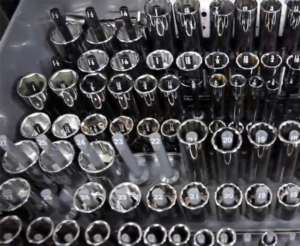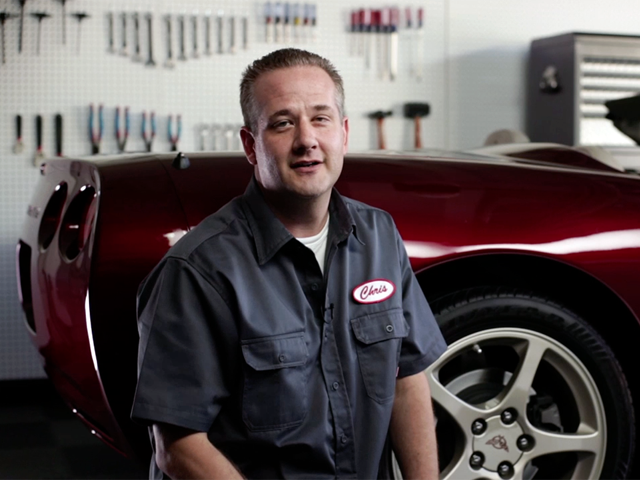 Deciding that it’s time to modify your car is a big step. For some, it takes years before additions are made. For others, the purchase of aftermarket products begins before the car even leaves the dealership lot. It all is a matter of what you are looking to get out of your ownership experience and where you see a potential project heading. However, one of the biggest mistakes newcomers to the aftermarket game make is to assume that you need a shop for everything. Sure, some additions such as turbochargers or advanced electronics may require professional assistance. Yet, in many cases, you can save a huge amount of time and money by doing the job yourself.
Deciding that it’s time to modify your car is a big step. For some, it takes years before additions are made. For others, the purchase of aftermarket products begins before the car even leaves the dealership lot. It all is a matter of what you are looking to get out of your ownership experience and where you see a potential project heading. However, one of the biggest mistakes newcomers to the aftermarket game make is to assume that you need a shop for everything. Sure, some additions such as turbochargers or advanced electronics may require professional assistance. Yet, in many cases, you can save a huge amount of time and money by doing the job yourself.
Typically, there are general areas that DIY newcomers upgrade first: engine performance (intake, exhaust, etc.) and suspension (lifting, lowering, wheels, tires, etc.) In this post, the focus will be on both of those main areas. These are jobs that can be done in the comfort of your own garage or your driveway. For any work that needs to be done underneath the car, you will need stable jack stands or ramps. As with most beginners, the process usually starts with an aftermarket intake and exhaust. That is where we will begin.
Beyond ease of installation, the appeal of intake and exhaust upgrade is due to their immediate performance gains and sound. Adding a new intake is relatively simple and involves only a few bolts and hose clamps. Best of all, for the overwhelming majority of cars, an intake install does not involve getting under the car. Simply pop the hood and you are good to go. Try your best not to drop anything into the engine bay itself. That is a hassle you really, truly do not want to deal with. Having a buddy help out can go a long way here.
 When it comes to exhaust systems, the process gets a little more complicated, but not by much. It is highly recommended that newcomers to modifications start with exhausts that start no further up than the catalytic converter. These are known as “cat-back” exhausts and avoid directly dealing with the engine. After getting your vehicle safely and securely up on jack stands, most factory exhausts are fairly simple to remove. Air tools are helpful, but not required. Have a mallet handy along with a basic socket set and ratchet, and you should be good to go.
When it comes to exhaust systems, the process gets a little more complicated, but not by much. It is highly recommended that newcomers to modifications start with exhausts that start no further up than the catalytic converter. These are known as “cat-back” exhausts and avoid directly dealing with the engine. After getting your vehicle safely and securely up on jack stands, most factory exhausts are fairly simple to remove. Air tools are helpful, but not required. Have a mallet handy along with a basic socket set and ratchet, and you should be good to go.
A buddy is helpful for intake installs, and almost mandatory for exhaust work. Save yourself a huge amount of time and money by having a friend lend a hand.
Generally, the application of the new system is the same as it was for removing the factory one, just in reverse. Again, the simplicity of the task depends heavily on your specific vehicle. Most cat-back exhaust layouts are straightforward. With a new intake and exhaust, you have not only improved the sound of your ride but also reduced how hard the engine has to inhale and exhale. Think about trying to breathe through a straw versus without one. Odds are you can run significantly harder and easier without the straw. The same applies to the combustion process. You may even see a slight increase in fuel economy.
 Ready for even better news? Suspension components do not present much of a learning curve over intake or exhaust procedures. In fact, they may be significantly easier. The nice thing about the Internet is that there is a step-by-step guide for practically any vehicle on the road today.
Ready for even better news? Suspension components do not present much of a learning curve over intake or exhaust procedures. In fact, they may be significantly easier. The nice thing about the Internet is that there is a step-by-step guide for practically any vehicle on the road today.
Note that the most important part of the process is to make sure you have properly reinstalled each component. For example, if you were working on your brakes, before even taking your car off of the jack stands, test to make sure the brakes are fully functional. Waiting to find out that you failed to correctly reattach your brakes on the road can and probably will be disastrous, and don’t forget to bleed those brakes (also a simple process).
Putting on aftermarket wheels can be done in a matter of minutes. With your car on jacks, just remove the factory wheel and attach the new one. It really is that simple. Make sure that the wheels can be fitted to your specific vehicle, and that they have the proper spacing before you order them. Don’t forget to follow the manufacturer’s recommended torque specification and use a quality torque wrench to tighten those lug nuts down.
No matter which area of the car you are working on, always be comfortable with your limits. Most of us have a favorite shop where we usually have work done. Why not take the time to ask the professionals what they recommend? Chances are a full-time, trusted mechanic is going to have fairly sound advice that could greatly aid in getting the job done right. Even the most experienced car experts had to start somewhere so there is no such thing as a stupid question. Genuine advice, however, is a very real and invaluable thing. Another tip is to read articles or watch videos online about how to perform the job you’re about to do yourself. That will give you a good idea about the pitfalls, safety precautions, help you’ll need, and whether or not it’s something you even want to get involved with!
 Finally, make sure you have all of the necessary tools before you loosen the first bolt. Having the right equipment ahead of time can eliminate unwanted stops in the middle of a tricky step. Better yet, it prevents the temptation to try and get by with inferior components that could cause very serious issues down the road. Feel free to spoil yourself. Get the tools you need and the project will go much, much smoother.
Finally, make sure you have all of the necessary tools before you loosen the first bolt. Having the right equipment ahead of time can eliminate unwanted stops in the middle of a tricky step. Better yet, it prevents the temptation to try and get by with inferior components that could cause very serious issues down the road. Feel free to spoil yourself. Get the tools you need and the project will go much, much smoother.
One of my earlier posts, “10 Tools Every Home Mechanics Should Have,” will set you up with nearly every tool you will need for your upcoming project. In case you need a little more incentive to pop the hood yourself, check out “5 Reasons to Do Your Own Vehicle Repairs and Improvements.”
Facing a project, especially for an amateur, can seem like a monumental task. Yet, with a little know how, some preparation and a buddy to help out, it can also be one of the most rewarding accomplishments a car enthusiast could ever ask for. Plus, getting to know your vehicle a little bit more every time you work on it helps for those unfortunate moments when you’re stranded on the side of the road waiting for help. You might just be able to fix what’s wrong on the spot and be on your way before you know it!


Leave a Reply